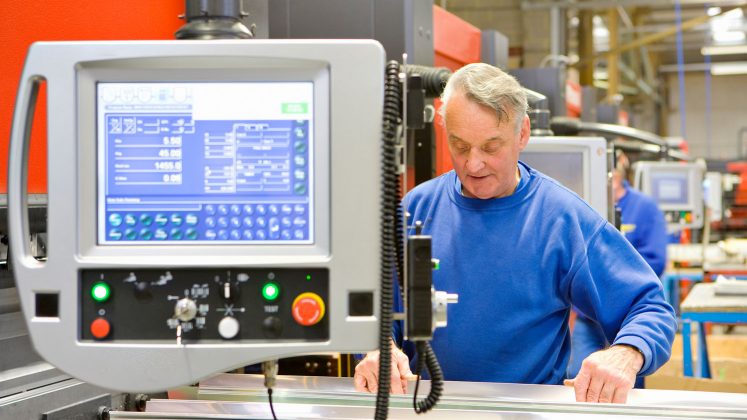In the coming years, many jobs are likely to disappear due to automation, while others will be altered forever. But who is most interested in these “at risk” jobs? Is it younger job seekers, who will have to live with the consequences of their career choices for decades? Or older ones, who may be on the verge of retirement?
To answer this question, we broke down job postings on Indeed into groups of occupations that have a high or low intensity of repetitive or routine tasks. Broadly speaking, management, professional and service occupations fall into the non-routine category while sales, administrative, construction, transportation, production and repair occupations are considered routine.
Within each of these categories, we also divided occupations based on whether they primarily emphasize cognitive skills or manual skills. While both routine cognitive and routine manual jobs have functions that could be automated, understanding generational differences along these lines is still useful because employment levels and projections for cognitive and manual occupations differ quite dramatically.
So which generation shows the most interest in jobs susceptible to automation? Let’s take a look at the data.
Millennials are drawn to jobs that are less susceptible to automation
Although the majority of job seekers in all three groups under consideration – millennials, Generation X and boomers – show interest in routine jobs, millennials are the group with the greatest appetite for non-routine occupations. While 48% of millennials are interested in non-routine occupations, for boomers the figure is a considerably lower 39%.

Millennials are also significantly more interested than boomers in cognitive occupations, but the biggest divergence in preferences between the two groups appears in the category of routine manual jobs.

Baby boomers turn out to be 67% more likely than millennials to show interest in a range of routine manual occupations that include installation maintenance and repair, transportation and material moving, and production occupations. Generation Xers literally take the middle ground – while they show more interest than boomers, but less than millennials, in non-routine cognitive occupations, the reverse is true for routine manual ones.
In contrast to their peers in the US, younger British job seekers show relatively higher levels of interest in jobs that are less likely to be automated, such as those classified as non-routine cognitive occupations.
Are millennials following in their parents’ footsteps when it comes to choosing a job?
Going a step further into more detailed occupations, we can see that millennials have an above average interest in jobs in education, arts and entertainment, as well as the life, physical and social sciences. All these occupations fall into the category of non-routine cognitive — that is, jobs that have the lower likelihood of being automated any time soon.

Conversely, when compared to the average job seeker, boomers tend to be more drawn towards job offers in personal care and service, transportation and material moving and installation, maintenance and repair.
These occupations fall into the category of manual occupations, and two of them are also classified as routine — the group of jobs that tend to be associated with a higher likelihood of automation in the future. When it come to choosing an industry, these two generations show a significant difference in taste.
However, while both millennials and boomers job seekers in the UK have preferences for certain sectors that often diverge from those of the average job seeker on indeed.co.uk, this is not true for Generation X job seekers.
Paths to the future
Of course, no generation of job seekers is completely doomed. Automation is a process, not a single event, and technological progress is going to impact different occupations at different times.
While each generation sends about half of its interest to routine jobs, precisely which specific occupations receive this interest differs by age group so millennials may feel the effects of automation at a different time than Gen Xers.
Disappearing jobs can be a frightening concept and it’s impossible to know exactly which jobs are ‘safe’ — but everyone can prepare for the future by building up transferable, non-routine skills that can be applied across a wide array of occupations.
Methodology
This analysis is based on six months of Indeed job seeker activity, from September 2016 to March 2017. Job seeker interest is measured as the volume of clicks to job postings in each occupation group as a share of clicks to all job postings. Indeed job postings are organized into their relevant US Bureau of Labor Statistics’ Standard Occupational Classification (SOC) category. The SOCs are then grouped in the following categories based on their primary job functions: non-routine cognitive, non-routine manual, routine cognitive, and routine manual, as has been done in previous research. Job seeker age is estimated based on resume characteristics and categorized into the relevant generation, using Pew Research Center definitions: millennials (ages 20-36 in 2017), Generation Xers (ages 37-52 in 2017) and baby boomers (ages 53-71 in 2017).
